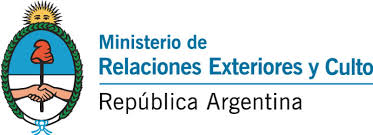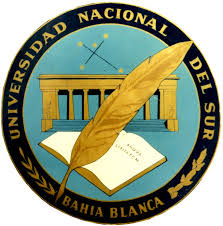Tourism
You can visit interesting places in Argentina taking domestic flights. For more information visit the official Tourism website.
Buenos Aires
Buenos Aires is one of the world’s biggest cities in which, including the suburbs, there are over 11,000,000 inhabitants. It is also the most elegant and active city in South America and the one that summarizes the heterogeneous essence of Argentines the best. With a modern, hip structure and dynamic activity, it has managed to preserve old traditions and endearing corners. Visitors feel fascinated because of its environment, because neighborhoods have all different personalities, and also because people are warm and there is a wide range of shopping and cultural proposals. Buenos Aires is surrounded by the splendid Argentine nature and it is the great cosmopolitan door to South America.
Iguazu Falls (Northeast)
This is a region of large rivers, humid tropics, red earth, magnificent forest, a virgin forest full of huge trees and extraordinary flora and fauna. Great Waters – “Iguazú” in the Guaraní language – overflowing into one of the world’s wonders: the Iguazú Falls. A scenery of exuberant beauty spreading along the Iguazú National Park, Saltos del Moconá (Moconá Falls), Río Pilcomayo National Park, El Palmar National Park, Esteros del Iberá (Iberá Swamps) or the Chaco plains. Apotheosis of Nature, where the Jesuit ruins, declared World Heritage by the UNESCO, are a vivid testimony of the Society of Jesus’ fruitful work.
Salta (Northwest)
Red deserts, dusty adobe villages, and sparkling white churches are what you'll find in the northwestern part of Argentina. You might indeed think you were in Bolivia or Peru as you savor the indigenous flair of a place steeped in history. Here you'll find the ruins of ancient civilizations -- be it the terraced settlements of the Quilmes Indians or the mysterious standing stones of the Tafi tribe. You can gaze upon the wonderful baroque art and colonial splendor of Salta city. Here begins Route 40, that epic Andean roadway that forms the backbone of Argentina. In the Northwest alone it passes by vineyards, cactus hills, rainforests, tobacco fields, sugar-cane country, dinosaur parks, and vast empty salt plains. All this and more make the Northwest of Argentina the very heart of South America.
Cuyo (West)
Cuyo - “desert country” in the Indian language - is the region of the high peaks, the snow-covered volcanoes, and the large wilderness spreading from the Andes mountain range and foothills to the steppe. The visit to Ischigualasto - Talampaya Natural Parks, is a true journey to the dinosaurs era. Ischigualasto, also known as “Valle de la Luna” (Moon Valley) because of the amazing diversity of forms and colours of its landscape shaped by erosion, is one of the world’s most important paleontologic sites. The Talampaya River Canyon reveals amazing multi-shaped layers in its high red walls. Pink flamingos, Andean ducks, “vicuñas” and “guanacos” cohabit freely in parks and natural reserves, while condors fly over the area. The region displays the full splendour of the Central Andean Range. The Aconcagua (6.959 m) is the highest peak in the Western Hemisphere, and its steep slopes are renown and respected by mountain climbers from all over the world. In the valleys of La Rioja, Mendoza and San Juan, among leaves of grapevines, farms and wineries, visitors can go along the Wine Road, an attraction of international renown.
Bariloche
San Carlos de Bariloche, one of the main tourist destinations in Argentina , is located in the northwest of the Argentine Patagonia , at 770 meters above sea level, on the shores of Lake Nahuel Huapi . It is 1,680 kilometres away from Buenos Aires City . The colours and hues of the landscape vary according to the time of year, with each season offering its own special surprise: sheer green in summer, ochre and yellow in autumn, multicolour in spring and stunning white in winter. There is a full range of accommodation and shops in Bariloche, where the lifestyle blends the best features of big city and small village life. Bariloche is a melting pot of cultures, where the area's native past, European culture and provincial customs converge. All tourist activities take place in exceptionally beautiful natural surroundings. Many tours, such as those to Mount Tronador , Victoria Island and Arrayanes Forest , El Bolsón, Puerto Blest or San Martín de los Andes , have become traditional. In addition, there are alternative tours where you can learn about the typical plants and wildlife that inhabit each of the different ecosystems in the Nahuel Huapi National Park . You can add action to a sightseeing tour by doing trekking, rafting, skiing, horseback riding or any other of countless outdoor activities. And, of course, Bariloche also offers the tourist a number of pubs, snack bars, restaurants and discos. Bariloche offers a wide variety of local handcrafts. Chocolates and smoked foods are a classic, both in Argentina and abroad. In addition, there is an almost endless variety of products ranging from beer to natural cosmetics made from wild rosehips and lavender, pottery, candles, knitted garments, preserves and carved wood.













